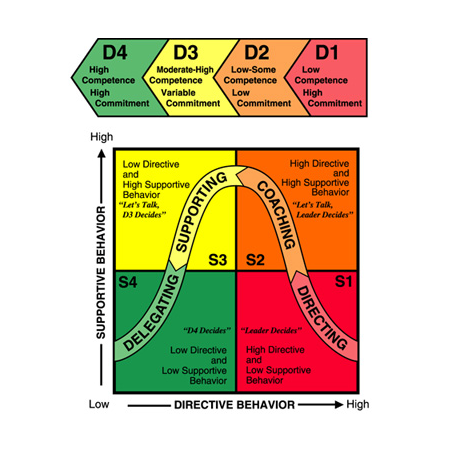Hersey-Blanchard Model
The Hersey-Blanchard Model is a tool to manage and direct people based on situational factors. The model consists of two parts: a process (top) and a matrix (graph).
The matrix is a tool designed for leaders and reads from right to left starting with S1 (Situation 1: Directing) to S4 (Situation 4: Delegating). The process follows each situation describing the state of direct reports (or followers if you will).
Directing: is concerned with instructing highly committed people who have yet to develop the necessary set of skills to execute tasks. At this stage, direct reports are attributed with high commitment and low competence.
Coaching: Despite rising competence, the levels of commitment have fallen – leaders are required to increase their supportive behaviour by asking challenging questions and allowing direct reports to solve problems.
Supporting: Employees in this stage have high levels of competence and varying commitment levels – they may resign – and leaders have to increase their supportive behaviour; focusing less on directing reports.
Delegating: Employees are highly competent and in control of their own projects. These employees can lead their own teams and develop them in a similar fashion.
Have a think about where you sit – in both parts of the models. Use the model to successfully navigate from one end to the next. The reservation I have about this model is that it is very linear and fails to describe fall back strategies.
This model is from The Decision Book. Please make sure to visit 50 Top Models – the author’s website. If you like what you see, buy the book! Support the author and awesome content.


